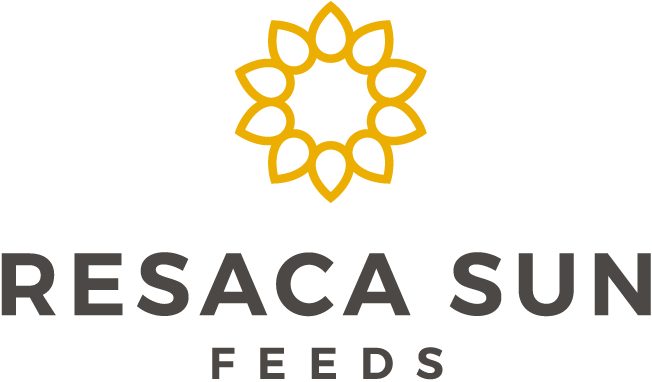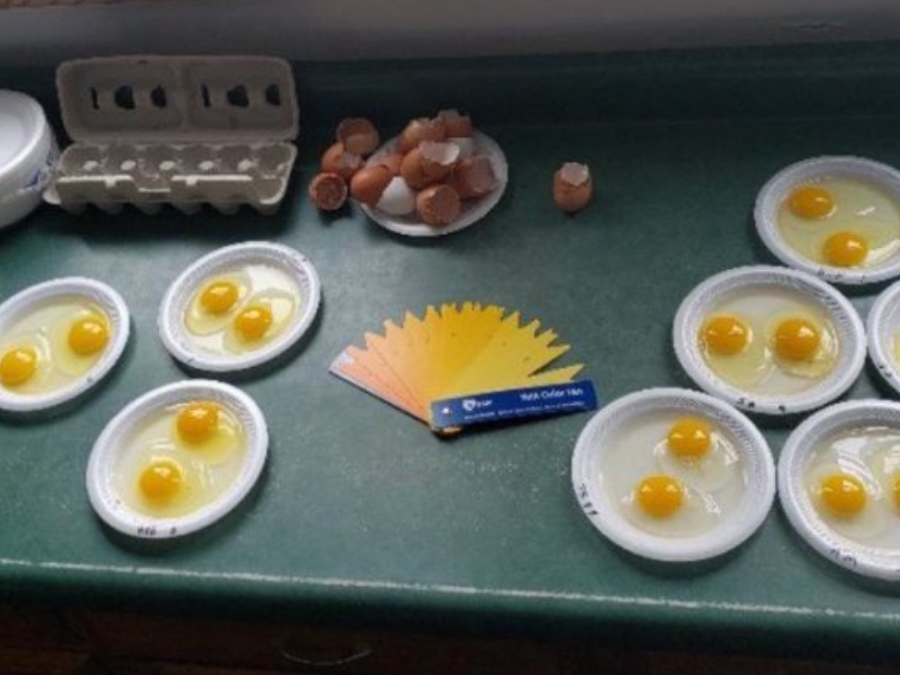Yolk color is a hot topic for farmers and feed mills alike. So much is driving the desire for a golden yolk, but it really comes down to customer demand. Fellow breakfast eaters love cracking open eggs and seeing a nice yellow-orange yolk. Some even believe that a darker yolk means the eggs are healthier. While there is some accuracy to this, egg yolk color can be adjusted using feed additives. However, there are other factors that affect yolk color like age, housing, and health. But one of the most notable factors is feed.
Feed can offer xanthophylls which are carotenoids. Xanthophylls are what give color to a chicken’s legs, egg yolk, and skin. Sources of xanthophylls include green grass, corn, alfalfa meal, marigold, and paprika. Corn has low levels of these carotenoids at 20 parts per million (ppm), but because corn is often a high percentage of the diet, it can help with yolk color. This is why layers fed corn-free diets can have such pale yolk colors. Pasture raised hens also tend to lay eggs with darker yolks color because they have access to fresh grass, and green grass is a wonderful source of xanthophylls at close to 300 ppm. Paprika and marigold are other ingredients that are often added to the feed to improve yolk color. The benefit of paprika and marigold is improving yolk color. Unfortunately, paprika and marigold offer little to no nutritional value to the feed or the egg.
As mentioned before, paprika and marigold can be added to feeds to improve yolk color. Resaca Sun Feeds adds paprika and marigold to our layer feeds. These two products together help increase xanthophyll levels up to an ideal level for nice, golden yolks. We add both marigold and paprika to our feeds to boost yolk color because there are 2 parts of egg yolk pigmentation.
- The saturation phase involves yellow carotenoids helping create a yellow base of the DSM yolk fan color around 7 (the scale is set from 0-16). Marigold provides the yellow carotenoids, which establish a base.
- Color phase. Once there’s a good base, then add a red carotenoid, changing yolk color from a yellow to orange. Paprika provides the red carotenoids to change yolk pigmentation
Supplementing layer feeds can help improve yolk color but building xanthophyll stores in the hen should start during in the pullet stages. This will lead to richer yolk colors when the pullet begins to lay. You can see how well the pullet is storing xanthophylls by looking at her legs and beak. You should see a nice, bright yellow. Some sources recommend feeding a xanthophyll rich diets 2 to 3 weeks before the flock starts to lay. Resaca Sun Feeds pullet feeds have been fortified with ingredients like alfalfa meal and marigold to help pullet build xanthophyll levels. Our goal is to help your hens lay the perfect egg!
Sources
Cisneros, Fernando. “DSM Egg Yolk Pigmentation Guidelines.” DSM, 28 May 2021.
Moros, E. E., et al. “Analysis of Xanthophylls in Corn by HPLC.” Journal of Agricultural and Food Chemistry, vol. 50, no. 21, 2002, pp. 5787–5790., https://doi.org/10.1021/jf020109l.

